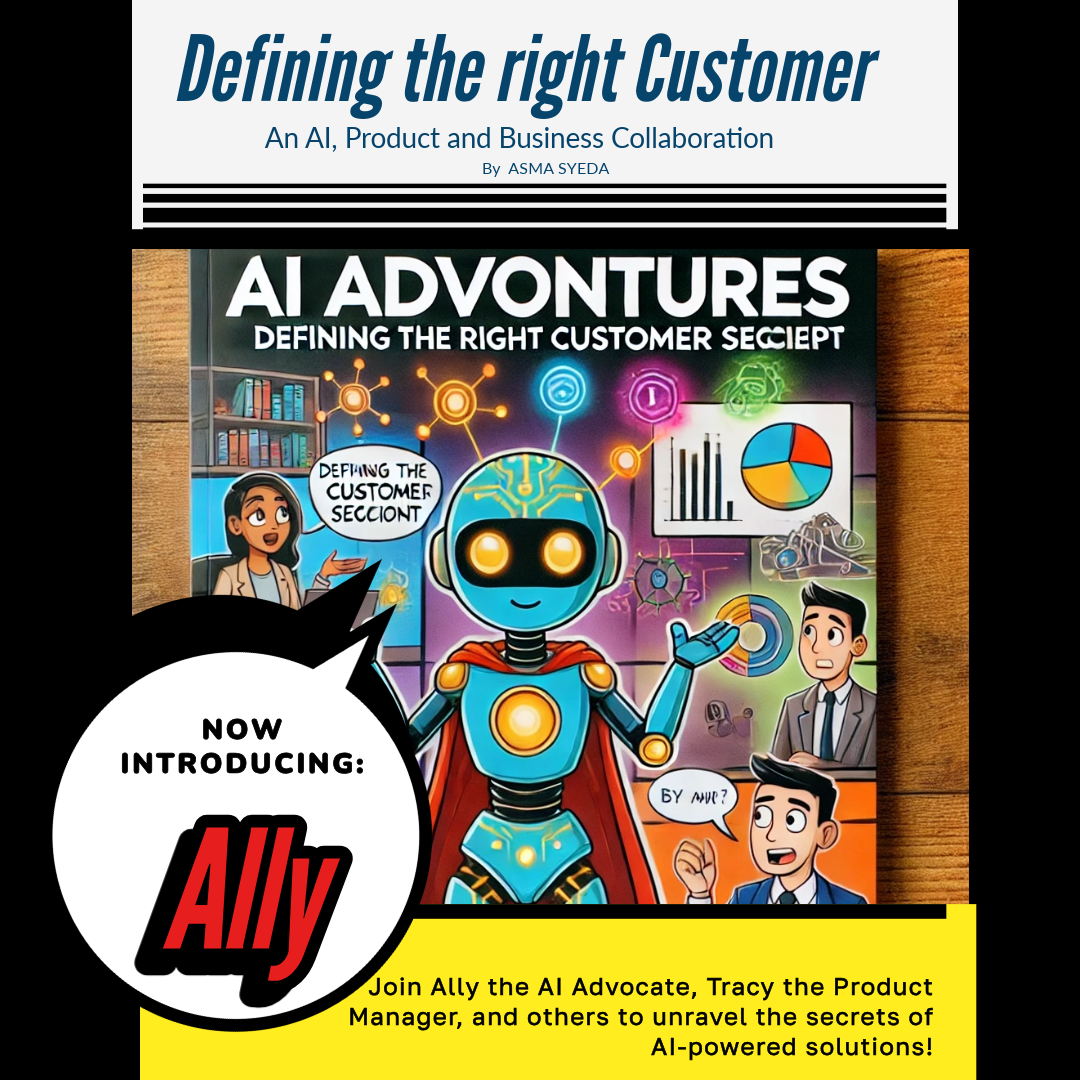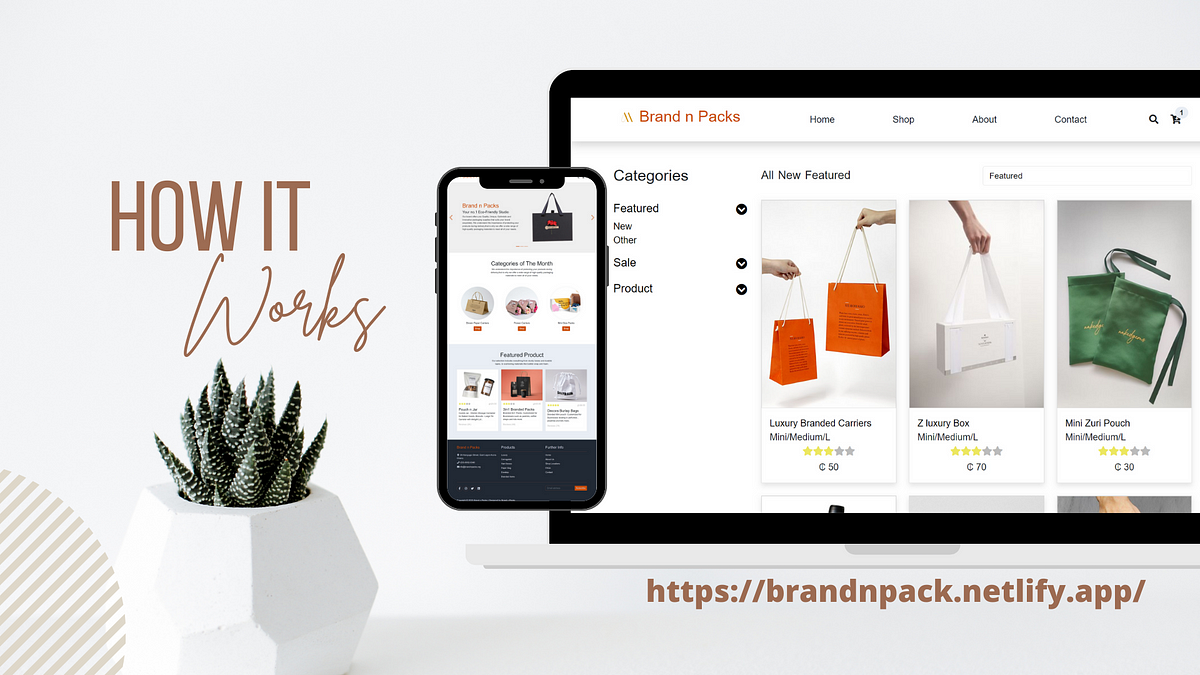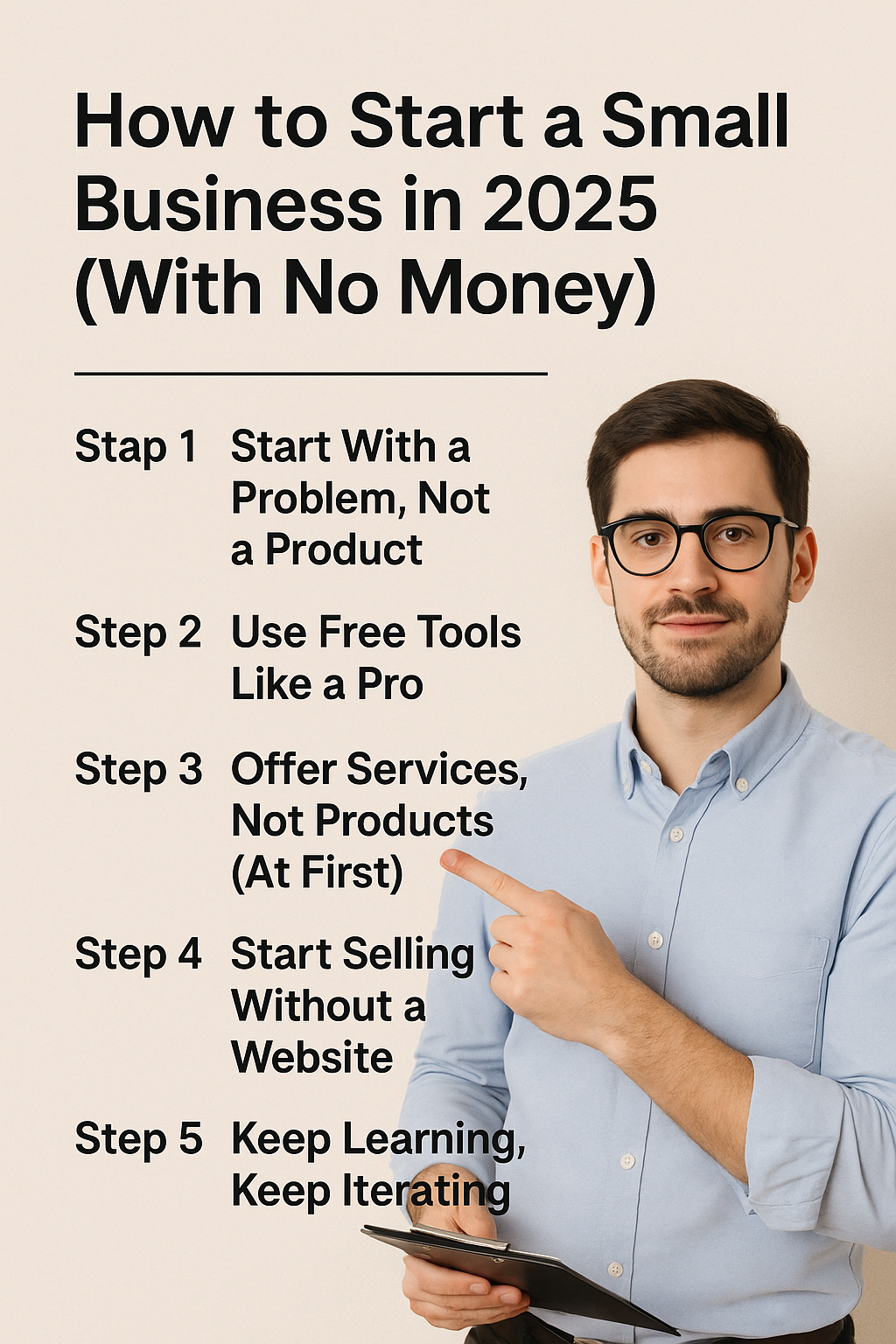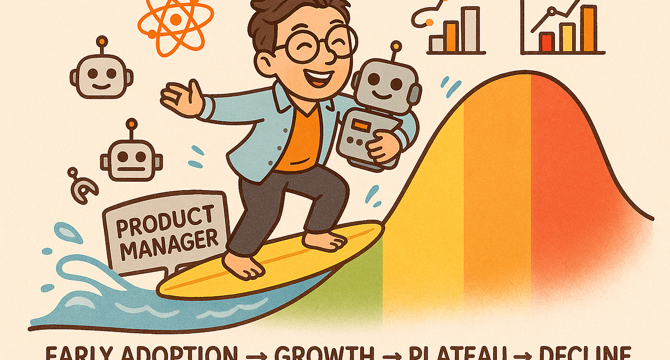Product Management News
Medium
308

Image Credit: Medium
The AI Illusion: Why Good Products Start with Real Problems
- The importance of defining the right customer and problem before building AI products is highlighted in a comic.
- The comic features Ally the AI Advocate and Tracy the Product Manager navigating stakeholder chaos and unclear problem definitions.
- Tracy emphasizes the need to ask the right questions to clarify the problem being solved.
- They focus on creating measurable signals by defining thresholds, parameters, and outcomes for AI.
- Tracy helps break down customers by understanding the stories behind their struggles, not just the outcomes.
- The team addresses concerns about biases in AI systems and commits to regular reviews and ethical oversight.
- They stress the importance of building AI systems with a phased approach including discovery, data, validation, and build stages.
- The comic underscores the significance of customer personas in guiding AI product development.
- Ally emphasizes that AI success starts with understanding people, their assumptions, and expectations.
- The comic aims to make AI products smarter by focusing on people and their needs.
Read Full Article
18 Likes
Medium
198

Image Credit: Medium
My Journey from Designing Experiences to Crafting Strategies and Embracing Product Management
- Ifunanya Marriette Okeke, known as marrietify, shares her transition from product designing to product management.
- She was a passionate product designer focusing on user experiences and interfaces.
- After three years, she desired a broader impact and transitioned to product management.
- Marriette wanted to shape product strategy, collaborate with teams, innovate, and drive product success.
- Her interest in product management sparked from wanting more significant responsibilities.
- She received support and guidance from mentors and a professional network.
- Connecting with experienced product managers and attending events helped her grow in her new role.
- Through reflection, Marriette feels proud of her accomplishments and looks forward to the future.
- She expresses readiness for the next career chapter in product management.
- Marriette is confident in her ability to influence digital products and make a lasting impact.
Read Full Article
11 Likes
Medium
127

Image Credit: Medium
Indian Online Grocery Market: Scheduled Delivery for Expansion in Emerging Cities
- The Indian online grocery market was valued at INR 743.29 billion in 2023, with a projected CAGR of 31.33% from 2024 to 2029.
- Factors driving this growth include increased internet penetration, urbanization, and post-COVID behavioral shifts.
- The market is set to reach INR 4,648.67 billion by 2030, growing at a CAGR of up to 35.18%.
- Q-commerce is expected to grow annually at over 40% through 2030, with significant potential for businesses entering the market.
- Zepto, a Mumbai-based startup offering 10-minute deliveries, has gained 25–30% market share in two years, especially in Tier-1 cities.
- Zepto's operational success relies on technological advancements such as drone testing and EV fleet expansion.
- Challenges faced by quick commerce companies include profitability issues due to high operational costs and low average order values.
- Expansion into Tier-2 cities raises concerns due to operational costs and AOV challenges.
- A study showed that scheduled delivery optimization could reduce transportation costs by about 43%.
- Companies are focusing on fostering integrated ecosystems to benefit all stakeholders, including customers.
- BigBasket excels in scheduled deliveries with a 99.5% on-time rate and uses advanced technology for efficiency.
- BigBasket faces competition in quick commerce and is adapting by launching 'BB Now' for 10-minute deliveries.
- Expanding scheduled deliveries into Tier-2 and beyond cities poses challenges that companies like BigBasket are addressing.
- BigBasket is implementing a hybrid retail model, increasing local sourcing, and expanding quick commerce to sustain growth.
- Technology and backing from Tata Group support BigBasket in navigating complexities in the market.
Read Full Article
7 Likes
Medium
238

Image Credit: Medium
“No Money? No Problem: Start a Business in 2025, without money”
- A practical guide on starting a business in 2025 without money emphasizes solving real problems.
- Focus on digital services, niche content, handmade items, or coaching/consulting.
- Utilize free tools like Canva, Figma, Carrd, Notion, and Buffer for various business aspects.
- Services only require skill and time, such as freelance writing, graphic design, or virtual assistance.
- Platforms like Upwork, Fiverr, LinkedIn, and local Facebook groups can help connect with clients.
- Utilize Instagram DM, WhatsApp Business, Google Forms, Gumroad, or Shopify Starter to sell without a website.
- Content creation is essential for building trust and credibility in a business.
- Engage with customers regularly, analyze what works, and adapt quickly to changes.
- Start with a service, focus on one customer at a time, and learn from failures to grow.
- Various engaging captions are suggested for social media posts related to starting a business in 2025.
Read Full Article
14 Likes
Discover more
- Programming News
- Software News
- Web Design
- Devops News
- Open Source News
- Databases
- Cloud News
- Operating Systems News
- Agile Methodology News
- Computer Engineering
- Startup News
- Cryptocurrency News
- Technology News
- Blockchain News
- Data Science News
- AR News
- Apple News
- Cyber Security News
- Leadership News
- Gaming News
- Automobiles News
Medium
136

Image Credit: Medium
What is the Diveblues iTurbo Handheld Turbo Fan?
- The Diveblues iTurbo Handheld Turbo Fan is a portable and rechargeable fan ideal for outdoor activities, sports, or daily commuting.
- It features a USB-C rechargeable battery with long-lasting power.
- The fan is extremely portable, lightweight, and pocket-sized, making it easy to carry anywhere.
- It is perfect for travel, festivals, hiking, the gym, hot offices, or even while doing makeup.
- Despite its power, the iTurbo operates quietly for user comfort.
- Diveblues differentiates itself from other brands through quality engineering, sleek design, strong airflow, and long-lasting battery life at a competitive price.
- The iTurbo fan is available for purchase on major e-commerce platforms like Amazon and the official Diveblues website.
- Customers are advised to watch for discounts or bundles for potential savings.
Read Full Article
8 Likes
Medium
260

Image Credit: Medium
How the Purge of DEI Will Negatively Affect the Business of Tech
- A privileged individual, albeit part of the underrepresented minority in tech, worked hard to secure a seat at the table and faced challenges of being seen as a diversity checkbox.
- DEI initiatives, while sometimes feeling disingenuous, aim to broaden talent pools and promote fairness rather than exclusion.
- Systemic inequalities, starting in childhood, are perpetuated by unequal funding in schools and a lack of diversity in curricula, shaping unconscious biases and hindering opportunities.
- Corporate DEI efforts counteract unconscious biases in decision-making, supporting marginalized groups' career advancement and reducing pay gaps, as shown in a 2022 AAUW study.
- Tech companies benefit from diverse teams, leading to more innovative products that cater to a global audience, ensuring competitiveness in the market.
- The rollback of DEI initiatives could hinder accessibility efforts crucial for serving all populations, risking market exclusion globally, like with the EAA's standards in the EU.
- Accessibility features have historically led to mainstream innovations, and companies deprioritizing accessibility may lose out on market reach and user experience enhancements.
- Failure to prioritize accessibility could lead to rushed solutions, technical debt accumulation, and decreased inclusive innovation within U.S. tech firms.
- Disbanding DEI initiatives threatens America's tech competitiveness, innovation, and consumer inclusivity, emphasizing that diversity is essential for business success.
Read Full Article
15 Likes
Medium
154

Image Credit: Medium
ChatGPT Is Brilliant ! But, This One Missing Feature Is Holding It Back to Win the Race.
- The author suggests a small improvement for ChatGPT to allow users to choose the length of responses with a dropdown or toggle above the input bar.
- This feature aims to empower users by giving them control over the conversation style without extra typing instructions.
- Users can select the preferred response length, enhancing satisfaction and retention.
- The author emphasizes that shorter responses save on compute power, making it a green computing move by reducing data and energy usage.
- The proposed feature would enable ChatGPT to learn user preferences for brevity and provide more concise auto-generated replies, benefiting mobile or low-bandwidth scenarios.
- This user-controlled feature is particularly helpful for neuro-divergent users and those with limited time, respecting their needs without necessitating prompt engineering.
- The author suggests that this UI/UX enhancement aligns with OpenAI's goals of responsible AI usage, efficiency, and more human-centered experiences.
- The author encourages OpenAI's product team to make AI interactions more human-centered by implementing this user-controlled response length feature.
Read Full Article
9 Likes
Medium
107

Image Credit: Medium
Don’t Sell GenAI — Sell the Outcome
- In enterprise sales, knowing your competition is crucial as budgets are usually reallocated, not created.
- Understanding whose budget you are displacing is key in enterprise sales and competing effectively.
- Innovation alone does not sell in enterprise environments; outcomes are what matter.
- GenAI is now commonplace in boardroom discussions, requiring startups to focus on delivering distinct outcomes.
- To succeed in the competitive GenAI market, startups need to be strategic and competitor aware.
- Rather than being competitor obsessed, be customer obsessed by understanding all alternatives your customers consider.
- Category creation may attract attention, but new categories often tap into existing budgets.
- GenAI startups must differentiate themselves by offering unique applications of AI using specialized data sets or workflows.
- Being competitor aware is crucial in serving customers by providing better outcomes than their current solutions.
- It's essential for startups to address the question of competition and adapt their strategies accordingly.
Read Full Article
5 Likes
Medium
189

Image Credit: Medium
From Vision to Prototype in 9 Hours: How AI Transformed My Product Management Process.
- A technical product manager shares an experience of using AI tools to rapidly create a prototype for a client's web3 paper trading platform.
- The client emphasized the need to see the vision rather than read about it, signaling a shift in validating and communicating product concepts.
- AI tools such as UX Pilot and v0 helped speed up the design process, turning designs into interactive prototypes within hours.
- Within 9 hours, the manager analyzed requirements, designed a user interface system, built a functional prototype, tested user flows, and delivered a clickable demo.
- The prototype not only impressed the client but also served as the foundation for future development.
- The experience highlights the evolving role of product managers as rapid prototypers and bridge builders.
- Key lessons learned include the importance of speed in validation, the role of AI tools as enhancers of expertise, and the shift towards hybrid technical creators.
- Product managers are urged to embrace the evolution towards quicker concept-to-prototype processes for a competitive advantage.
- The article emphasizes the need for product managers to adapt quickly to leverage AI tools effectively in product development.
- Product managers are encouraged to focus on creating prototypes rather than relying solely on documentation.
- The future of product management involves combining AI tools with solid product thinking, client empathy, and strategic vision.
- The article concludes with a call for sharing experiences of AI-assisted product development and successful tool implementations.
- Adapting to AI tools is crucial for product managers to remain competitive and succeed in the evolving tech landscape.
Read Full Article
11 Likes
Medium
211
Image Credit: Medium
Unlocking Body Language: Practical Tips for Better Communication
- Communication is like a dance where interpreting body language is key.
- Primary body language cues can be categorized into four groups.
- Facial expressions are unique to each individual but can reveal hidden thoughts.
- Smiling is a recommended facial expression for effective communication.
- A sincere smile involves squinting eyes and not tight cheek muscles.
Read Full Article
12 Likes
Medium
346

Image Credit: Medium
Why AI-Enabled Product Managers Are Poised for a Bright Future
- The evolution of technology typically follows a pattern of early adoption, growth, plateau, and decline.
- Software engineering went through a similar process, from being in high demand to becoming a mainstream field.
- AI is revolutionizing product management and creating a new wave of opportunities for AI-enabled Product Managers.
- AI-enabled Product Managers are not facing extinction but are at the forefront of the upcoming technological advancements.
- Product Managers who embrace AI tools and adapt to the changing landscape are well-positioned for success.
- Adapting early and learning continuously is key to thriving in the evolving field of product management influenced by AI.
- The future looks promising for Product Managers who integrate AI into their roles and processes.
Read Full Article
20 Likes
Medium
256
Image Credit: Medium
When the Back-End Leads the Dance: How Organizational Structures Undermine UX
- Conway's Law has remained relevant as organizations have evolved in the digital age.
- Despite advancements like Agile and DevOps, organizational structures often hinder UX design.
- In many organizations, the back-end architecture dictates the product strategy.
- Teams are organized around back-end services rather than user journeys.
- UX design is often adjusted to fit back-end constraints and limitations.
- Agile methodologies sometimes lead to fragmented UX due to internal team structure focus.
- Product development in Agile can prioritize internal processes over user experience coherence.
- Compromises in UX design happen incrementally due to organizational structures.
- Teams may compromise UX due to budget, sprint planning, or technical constraints.
- The compromise of UX design can become normalized within an organization.
- Systems reflect organizational structures, impacting UX design outcomes.
- The focus should shift towards designing intentionally for user experience rather than organizational convenience.
- Without restructuring thought processes and communication, systems will continue to prioritize internal efficiency over user needs.
Read Full Article
15 Likes
Medium
167

Image Credit: Medium
Visibility is not vanity. It’s survival in a world that overlooks quiet excellence.
- The writer reflects on feeling overlooked despite their contributions to projects.
- They describe a scenario where their efforts went unnoticed and unappreciated.
- Despite their work, they were not acknowledged or credited for their contributions.
- Feeling frustrated, they decided to no longer remain in the background.
- By advocating for themselves and making their presence known, they began to receive recognition.
- The transformation was intentional, focusing on healing and self-assertion.
- The writer encourages others to document their achievements, speak up, share knowledge, and be present.
- A reminder is given to those who feel invisible or underappreciated in their work environments.
- The key message is that being undeniably present is more important than being loud.
Read Full Article
10 Likes
Scrum-Master-Toolbox
335

BONUS: Never Stop Experimenting—Building a Culture of Continuous Discovery with Stavros Stavru
- Stavros Stavru shares insights on continuous experimentation and his book 'Never Stop Experimenting.'
- Teams face the exploration-exploitation dilemma in modern times.
- Stavru emphasizes the importance of maintaining an experimental approach amidst delivery pressures.
- The book 'Never Stop Experimenting' is based on a decade of practical experience.
- Viewing software development as incremental experiments is crucial for innovation.
- The 'Fatware Matrix' helps Product Managers reduce software bloat by removing unnecessary features.
- The NSE Ratio guides teams in optimizing their experimentation rhythm.
- Building a safe-to-fail culture involves leaders sharing their failures openly.
- Stavru is a Ph.D. in Organizational Transformations and author of 'Never Stop Experimenting.'
- He is a leading voice in Agile coaching, leadership, and soft skills.
Read Full Article
20 Likes
Medium
423

You Can’t Build What You Can’t See: The Hidden Layers of Product Reality
- When alignment breaks, a product may technically work but can lose traction, loyalty, or trust.
- Teams can end up solving non-existent problems and missing actual ones without visibility across product layers.
- Beliefs based on valid data might be incomplete as they only present part of the picture, leading to unintended tensions with users' values, identity, or expectations.
- Subtle misalignments may not be evident in dashboards but reflect in user behavior, brand sentiment, and retention.
- Teams are proficient in Epistemic Truth (metrics and models) but often overlook emotional, synthetic, and other layers crucial for user experience.
- The focus is not just on faster delivery but on intelligent delivery.
- Asking the right questions can uncover blind spots in experimentation or delivery frameworks, improving product development.
- Product improvement goes beyond better features; it entails understanding what is genuinely true about the product.
Read Full Article
25 Likes
For uninterrupted reading, download the app